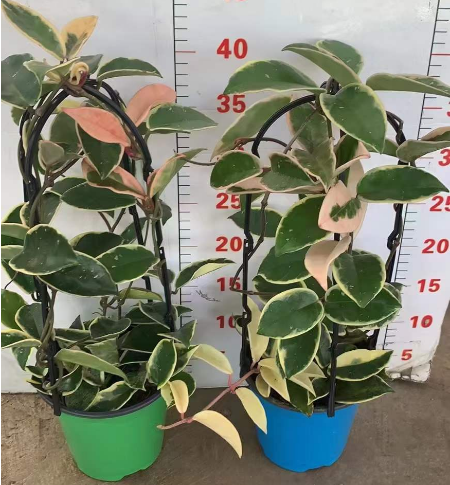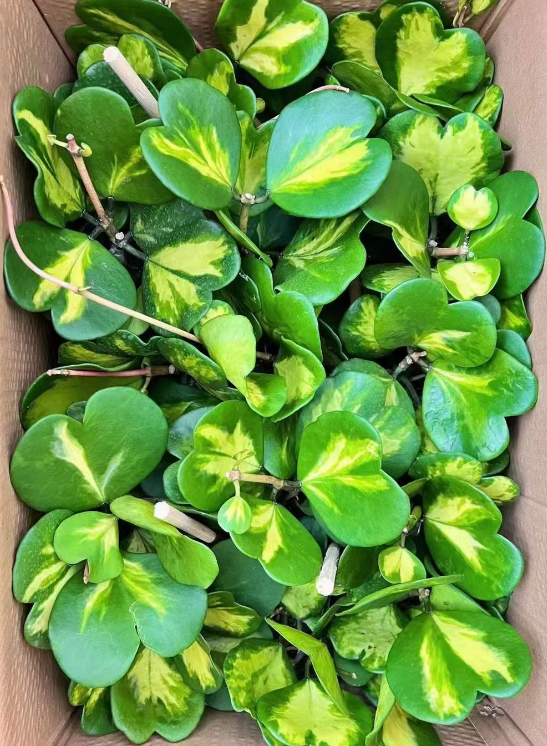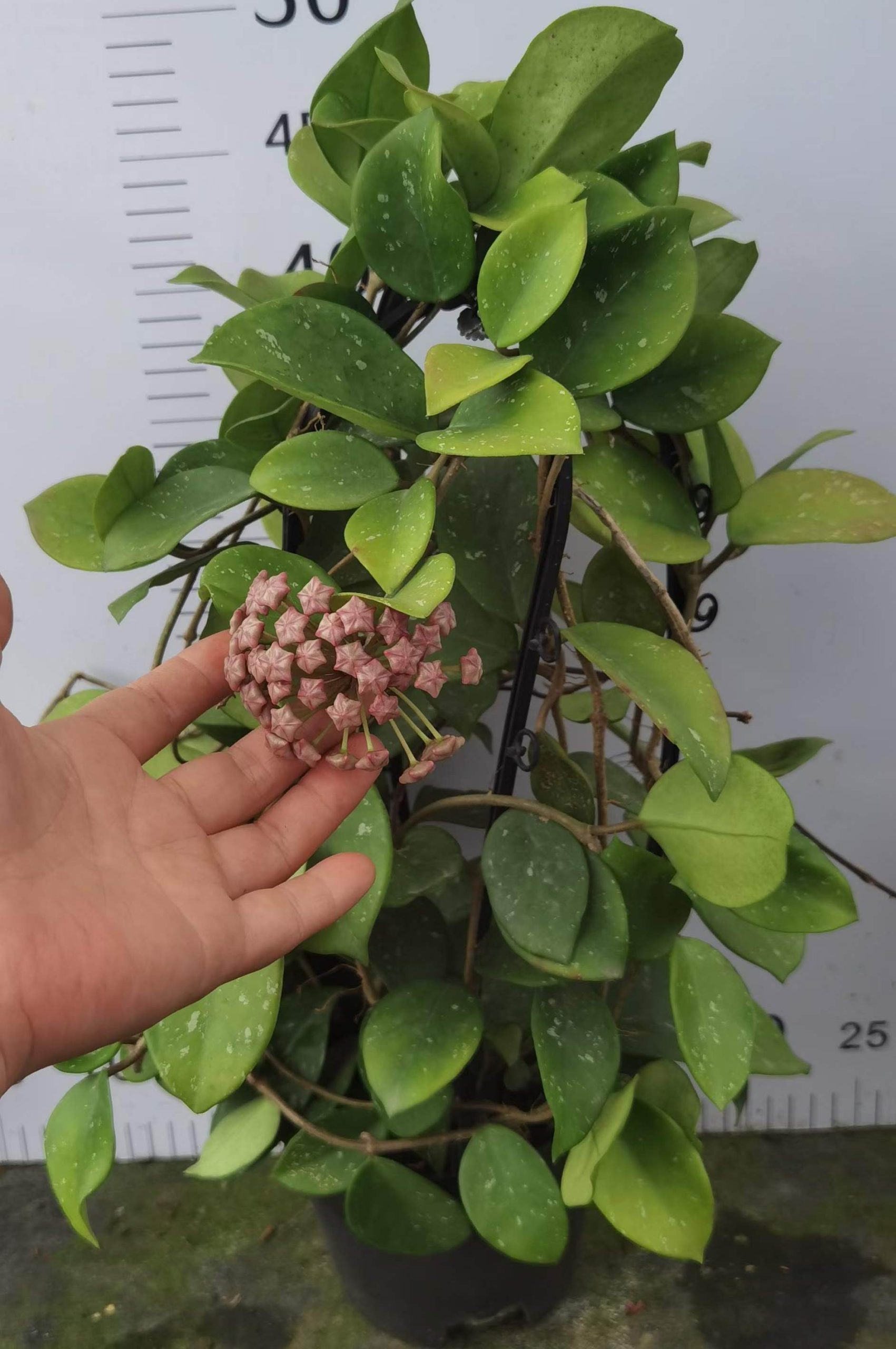Hoya plants can adapt to different light conditions to some extent, but providing them with the appropriate lighting will promote better growth, blooming, and overall plant health. Monitor your Hoya's response to the light it receives and make adjustments as needed to ensure it thrives in its specific environment.
Water: Proper watering is crucial for the health and well-being of Hoyas. Hoya plants prefer well-draining soil, so it's important to let the top inch (2.5cm) or so of the soil dry out before watering again. Overwatering can lead to root rot and other issues. Insert your finger into the soil up to the first knuckle to assess its moisture level. If it feels dry at that depth, it's usually a good time to water.
When watering your Hoya, aim to thoroughly wet the soil. Water until it flows out of the drainage holes at the bottom of the pot. Discard any excess water that accumulates in the saucer or tray to prevent the roots from sitting in standing water. The watering frequency for Hoya plants can vary depending on factors such as temperature, humidity, and the specific growing conditions. As a general guideline, watering every 1-2 weeks is often sufficient. However, always check the moisture level of the soil before watering to avoid overwatering as Hoyas prefer to be watered thoroughly but also need the soil to dry out slightly between waterings. Adjust the frequency based on the plant's needs and the environment it's growing in.
Hoya plants prefer room temperature water. Avoid using water that is too cold or too hot, as extreme temperatures can shock the plant. Allow tap water to sit for a day or use filtered water to let any chlorine or chemicals evaporate before watering. Adjust your watering routine based on the seasons. During the active growing season in spring and summer, when the plant is actively producing new growth, you may need to water more frequently. In contrast, reduce watering during the dormant period in fall and winter when the plant's growth slows down. Observe your Hoya plant's response to watering. If the leaves appear droopy, it may indicate underwatering, while yellowing leaves or a mushy stem may indicate overwatering. Avoid misting if your Hoya is in bloom, as it can cause the flowers to develop spots or rot.
Hoyas specific watering needs may vary depending on factors such as plant's size, pot size, humidity levels, and environmental conditions. Regularly monitoring the moisture level of soil & adjusting your watering routine accordingly will help ensure the optimal health of your Hoya plant.
Temperature: Hoya plants are tropical and subtropical plants that thrive in warm and consistent temperatures. They prefer temperatures between 60°F (15°C) and 80°F (27°C). They can tolerate slightly cooler or warmer temperatures for short periods, but prolonged exposure to extreme temperatures may negatively affect their growth and overall health. Avoid exposing it to temperatures below 50°F (10°C) as it can damage the foliage and cause stunted growth or leaf drop. Similarly, high temperatures above 90°F (32°C) can be stressful for the plant, especially if combined with dry conditions.
During the growing season, typically spring and summer, Hoya plants appreciate warmer temperatures. They tend to be more active and have increased growth during this time. During the winter months, they may benefit from slightly cooler temperatures and a slight decrease in watering. Sudden temperature drops or extreme temperature changes can shock the plant and lead to leaf damage. Keep your Hoya away from drafty areas, such as near air conditioning vents or open windows during cold weather.
Some Hoya species require a period of cooler temperatures to initiate flowering. For example, Hoya carnosa varieties often need a drop in temperature to around 50°F (10°C) for several weeks to encourage flower production. Understanding the specific requirements of your Hoya species can help encourage blooming.
Although Hoyas can tolerate a range of temperatures, providing a warm and stable temperature environment is key to the health and growth of your Hoya plant. Monitoring the temperature in the environment where your Hoya is located and protect it from cold drafts, avoid extreme temperature fluctuations, and provide temperatures within the preferred range to ensure optimal growth and blooming.
Soil: Hoya plants prefer soil that allows excess water to drain freely. Avoid heavy, compacted soils that can retain water and lead to root rot. A loose and well-draining soil mix will help prevent waterlogging. A mix specifically formulated for succulents or cacti can work well for Hoyas.






